In Part IV, I said there were two significant events that would change the fortunes of the Sega Mega Drive and Genesis in the November of 1990. The first and the most significant detriment to Sega's 16-bit console - though one could argue that it inspired a stronger sense of competition - was the debut of Nintendo's Super Famicom in Japan. The SNES/SFC would go on to have a very contentious relationship with the Sega Mega Drive/Genesis; the latest stage of an arms race that began with Sega's gloats about what the NES couldn't do in comparison to their 16-bit system. While the Super Nintendo Entertainment System had many advantages there were still areas in which it faltered compared to the Mega Drive, and Sega narrowed in on these strengths and capitalized them whenever they could. The alacrity of Sonic the Hedgehog (and his more teenager-friendly attitude problems) was no accident, after all.
The second of these big changes was the introduction of the Sega Mega Modem, Sega Meganet service, and the Sega Toshokan ("Sega Game Library") - a short-lived precursor to the Sega Channel that was exclusive to Japanese owners of the system. Through the Sega Mega Modem peripheral, which became available the same month (though compatible games had been released earlier), players could download games and software from an online database. To do this, they also needed the Game Toshokan cartridge to save the data onto and a paid monthly subscription to the Meganet service. Many Mega Drive games got their start here, though precious few would find later "concrete" retail releases and only a couple of those ever left Japan (one of which we'll cover in today's episode).
November was certainly a huge turning point for the system, and this episode's list of fifteen games handily reflects that: we'll see the continued prominence of one of the system's biggest western developers - including the debuts of two of their biggest sports franchises - and we also have a few (previously) digital-only Sega Toshokan games in the mix.
- Part I: 001-020 can be found here.
- Part II: 021-035 can be found here.
- Part III: 036-050 can be found here.
- Part IV: 051-065 can be found here.
Part V: 066-080 (October '90 - December '90)
066: Tel Tel Stadium
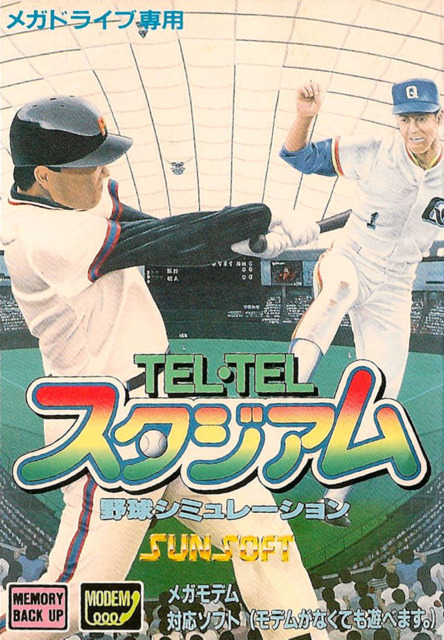
- Developer: Sunsoft
- Publisher: Sunsoft
- JP Release: 10/21/1990
- NA Release: N/A
- EU Release: N/A
- Franchise: N/A
- Genre: Baseball
- Theme: Pro Sports
- Premise: Test your baseball managerial skills with budding coaches all across the country in this modem-compatible baseball sim from Sunsoft.
- Availability: Japanese MD cart only.
- Preservation: Like Tel Tel Mahjong (#041 in this feature), this was a game explicitly built to utilize the Sega Modem, allowing players to compete with opponents online. Since you couldn't hope for a connection that would handle real-time pitching and batting - you'd basically see a pitch, and then maybe the other guy swinging about five seconds later - the game instead has AI batters, pitchers and fielders with the players' role to bark commands at their squad to exploit weaknesses in the opposing team or replace fatigued team members. It's nigh impossible to play without knowing all the Japanese commands, but at least you could always watch it play with itself. Folk'll pay good money for that kind of service.
067: Dynamite Duke
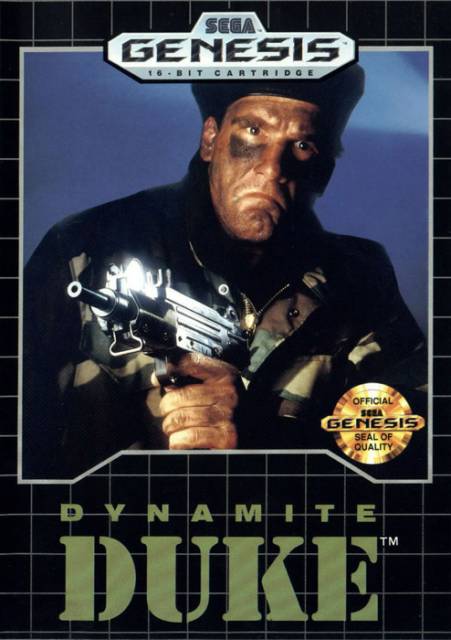
- Developer: Hertz
- Publisher: Sega
- JP Release: 10/27/1990
- NA Release: December 1990
- EU Release: April 1991
- Franchise: N/A
- Genre: Rail Shooter
- Theme: Sci-fi
- Premise: Take on hordes of military goons and powerful mutants as "Dynamite" Duke Fredericks, a skilled mercenary with a cybernetic arm of considerable strength, in this scrolling on-rails shooter.
- Availability: As well as the Mega Drive version, there's the original arcade game and a graphically weaker Master System port. Nothing more recent than that though.
- Preservation: Dynamite Duke's certainly a distinctive game, balancing Cabal-style light-gun shooting and acrobatic evasions of incoming fire. Bosses would even come up to Duke to brawl it out, requiring a lot of juking and well-timed punches. The Mega Drive port suffers in comparison to the arcade original, possibly due to it being the work of a third-party contractor, but even with the Mega Drive's abundance of shoot 'em ups there aren't too many games on the system like this one.
068: John Madden Football
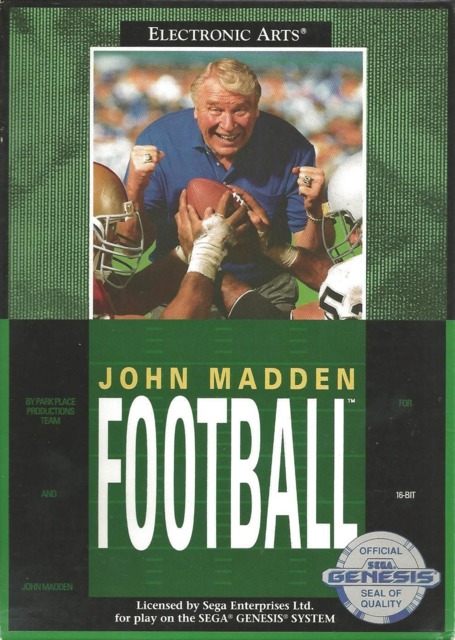
- Developer: Park Place Productions
- Publisher: Electronic Arts
- JP Release: N/A
- NA Release: November 1990
- EU Release: December 1990
- Franchise: Madden NFL
- Genre: Football
- Theme: Pro Sports
- Premise: Tie up your pigskins and lock away your turduckens, because the God-Emperor of Football makes his debut on the Sega Mega Drive with the first of many annual NFL games from Electronic Arts.
- Availability: If you really wanted to play a Madden game, I'm sure a new one will come along at any moment.
- Preservation: Either the first or second John Madden Football game and the foundation of EA's long-running franchise, released in time for the 1991 season. This Mega Drive version was the first time the series had been released on consoles, and it became such a natural fit that it was a huge seller and began an annual series that has yet to abate. It actually doesn't have the NFL license yet, but establishes everything else in the venerable series including the more realistic way it plays, its dedication to having 22 players on the field (a coup of the tech available at the time), and the advisory role of its titular player-turned-commentator.
069: Fire Shark / Same! Same! Same!
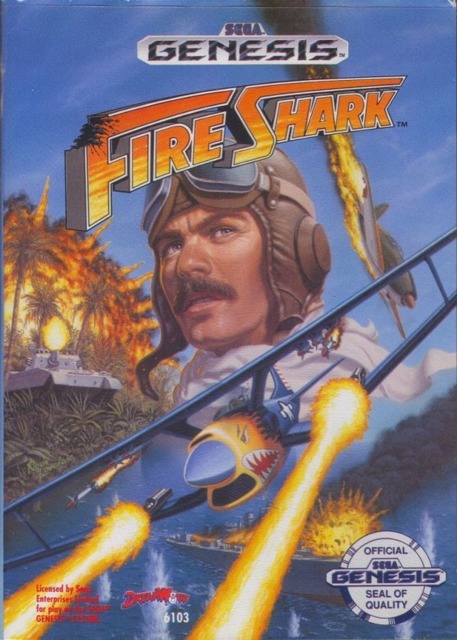
- Developer: Toaplan
- Publisher: Toaplan / Dreamworks / Sega
- JP Release: 11/02/1990 (as Same! Same! Same!)
- NA Release: November 1990
- EU Release: December 1991
- Franchise: Flying Shark
- Genre: Shoot 'em Up (Vertical)
- Theme: Modern Military
- Premise: It's time to take to the skies in a biplane in this game set in... wait, the 1990s? That must be one hell of a good biplane. I guess it wouldn't be called "Fire Shark" if it wasn't.
- Availability: There's no Toaplan shoot 'em up compilation I know about or Hamster Arcade Archives equivalent, so it's just MD cart or arcade original here.
- Preservation: I'm starting to suspect the reason why shoot 'em ups prospered on the Mega Drive was because they always had such badass names. Who wouldn't get out of the way of a flaming shark? Forgetting for a moment that sharks live in water, at least. The Japanese name meanwhile, despite sounding like a condemnation of how many shoot 'em ups there were on the system, actually means "Shark! Shark! Shark!", which I think also has its own appeal. Turns out a shark with a minigun is scary enough whether it's currently on fire or not.
070: Putter Golf
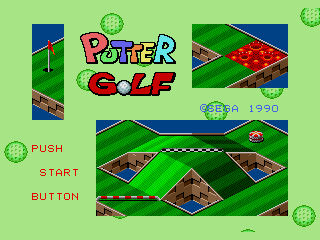
- Developer: Sega
- Publisher: Sega
- JP Release: 11/03/1990
- NA Release: N/A
- EU Release: N/A
- Franchise: N/A
- Genre: Golf
- Theme: Abstract
- Premise: Play some miniature golf via Sega's new Meganet online service. Just try not to go over par too often or the game will end prematurely.
- Availability: It's a digital-only game, so it's very unlikely anyone will find this in the wild.
- Preservation: Putter Golf was the first game to be sold digitally via the Sega Toshokan game cart and Sega Meganet online service. It, along with what is either a demo or a trailer for the Pyramid Magic series, were available on the service at launch. As you might expect from a digital-only game it's not particularly elaborate, but it does have this breezy fun abstract crazy golf feel with an isometric perspective that would later be put to better use in Kirby's Dream Course and a certain other mini-golf game showing up later down this list.
071: Granada
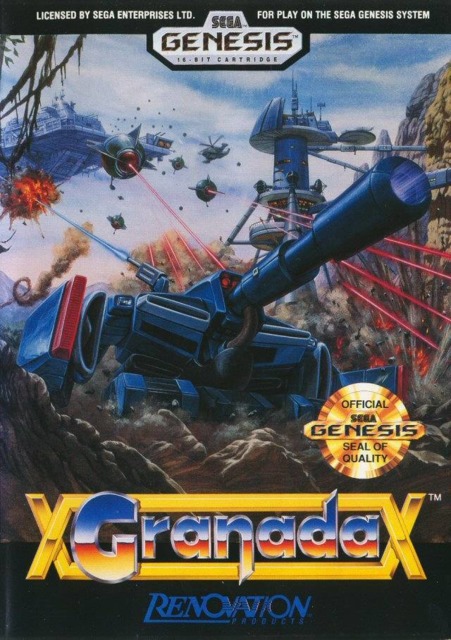
- Developer: Wolf Team
- Publisher: Wolf Team / Renovation
- JP Release: 11/16/1990
- NA Release: December 1990
- EU Release: N/A
- Franchise: N/A
- Genre: Shoot 'em Up (multidirectional)
- Theme: Sci-fi
- Premise: The "maneuver cepter" ("tank" to you or me) Granada storms into battle, taking down the antagonistic forces tearing the continent of Africa apart.
- Availability: Like Toaplan, no-one's really doing anything with Wolf Team's back catalogue prior to Tales of Phantasia and so this remains MD/Genesis cart only. It's not like Bandai Namco doesn't own it all after their acquisition. Get Hamster on the phone, guys.
- Preservation: As with Wolf Team's previous Mega Drive game Final Zone, this is a multidirectional shooter that feels a little like a Desert Strike precursor with its openness. Unlike Final Zone, it's less ambitious with its standard top-down view and the better for it, shrinking the player's "ultimate tank" into this tiny thing to help make all the enemies and enormous bosses surrounding it stand out better and avoid that annoying "enemies suddenly on your jock out of nowhere" issue. If you like your console twin-stick shooters (or equivalent, since the Mega Drive pad didn't have two sticks) this seems like a really cool and underrated one of those.
072: Fatal Labyrinth / Shi no Meikyu
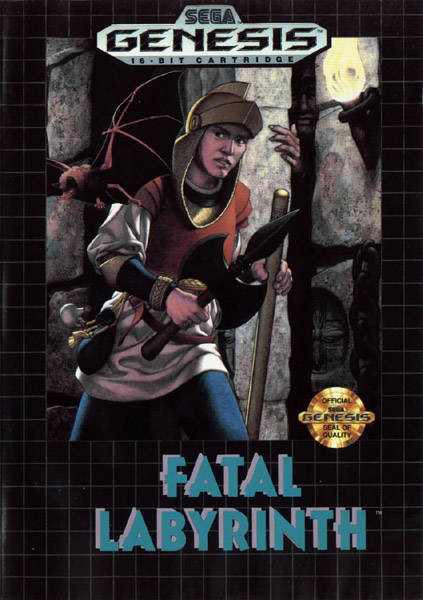
- Developer: Sega
- Publisher: Sega
- JP Release: 11/21/1990 (as Shi no Meikyu)
- NA Release: April 1991
- EU Release: 1991
- Franchise: N/A
- Genre: RPG - Roguelike
- Theme: Fantasy
- Premise: The warrior Trykaar must descend thirty floors beneath Dragonia, the castle of doom, to recover the Holy Goblet in the Mega Drive's first ever roguelike.
- Availability: Oddly enough, Fatal Labyrinth is widely available in recent Sega compilations like Sonic's Ultimate Genesis Collection and Sega Genesis Classics, as well as sold separately on Steam.
- Preservation: I'd always wondered why the Mega Drive had such a barebones, no-frills roguelike that frequently popped up in Sega compilations. I just figured that maybe the system was hard up for that specific genre; the SNES has a few more, but beyond Chunsoft's Mystery Dungeon series it was still slim pickings. Turns out it was another modest digital-only game originally made for Sega Toshokan and their Meganet service, and only one of two games from that service to ever see a retail release internationally. Fatal Labyrinth certainly hasn't aged well, lacking the complexity of computer brethren like NetHack or the quirky appeal of the system's much more popular roguelike ToeJam and Earl.
073: Castle of Illusion Starring Mickey Mouse / I Love Mickey Mouse: Fushigi no Oshiro Daibouken
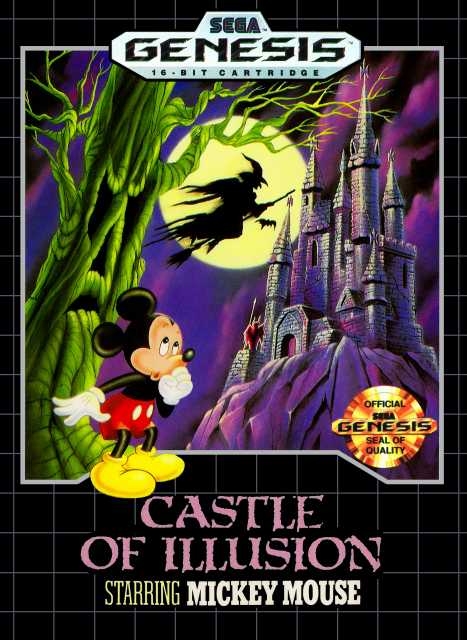
- Developer: Sega
- Publisher: Sega
- JP Release: 11/21/1990 (as I Love Mickey Mouse: Fushigi no Oshiro Daibouken)
- NA Release: December 1990
- EU Release: March 1991
- Franchise: Disney / Mickey Mouse / Illusion
- Genre: Platformer
- Theme: Fantasy
- Premise: Minnie's been captured by Mizrabel the Witch, and only Mickey can save her! The first of many classic Sega/Disney platformer collaborations, almost all of which were followed by the words "of Illusion".
- Availability: I'm not sure if it counts, but Castle of Illusion was remade as recently as 2013. It's more a "modern interpretation" of the original. Beyond that, there's a Japan only Saturn compilation as well as the Game Gear and Master System versions, which are slightly different.
- Preservation: Sonic's considered the Mega Drive's first big platformer hero (Alex Kidd doesn't count; he was a Master System holdover. Also his games suck) but really it was Mickey Mouse and the "of Illusion" series that began here with 1990's Castle of Illusion. It's not only a great-looking game but it controls like a dream and it has this fantastic sound design that sticks with you, from the music down to the twinkly sounds collectibles and defeated enemies make. Perhaps due to the high standards Disney insists upon for their mascots, game adaptations featuring those characters always seem to be stellar. (I'm more familiar with the Master System version, but then I'm just weird that way.)
074: Megapanel

- Developer: Namco
- Publisher: Namco
- JP Release: 11/22/1990
- NA Release: N/A
- EU Release: N/A
- Franchise: N/A
- Genre: Puzzle
- Theme: Abstract
- Premise: Rush to complete sets in this match-3 game from Namco, forming racy anime pictures in the single-player or competing with another player.
- Availability: Japanese MD only.
- Preservation: Megapanel's the unholy bastard child of a match-3 game and those sliding block puzzles that always seem to give people trouble whenever they pop up in Professor Layton or what have you. The goal is to remove panels by matching three or more of the same color in a row, but that means having to navigate an empty square around the field which adds a level of difficulty that isn't helped by the constant addition of extra lines (though it does mean you won't get stuck in a corner for long). One notable thing is that the core single-player mode has you build images by clearing lines, and they get kinda PG-13 rated as you get further along. Not quite Gals Panic, but getting there.
075: Junction
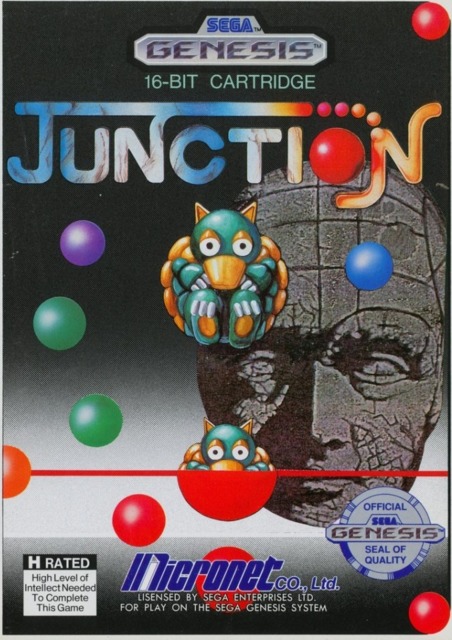
- Developer: Micronet
- Publisher: Micronet
- JP Release: 11/25/1990
- NA Release: April 1991
- EU Release: N/A
- Franchise: N/A
- Genre: Puzzle
- Theme: Abstract
- Premise: Keep the red ball in play by building pathways with a set of sliding tiles in this puzzler from Micronet, based on an old Konami arcade game.
- Availability: MD/Genesis cart only, though there's also a Game Gear version.
- Preservation: The Mega Drive actually saw two of these sliding panel games the same week, though this one's more like Pipe Dream in that the goal is to keep a continuous path going by moving tiles into place and aiming for the U-turns hanging off the side of the grid. Micronet developed the game using an old Konami arcade game called Locomotion as the basis, hence the Konami credit on the title screen, though Junction has a fancy angled view and some trippy backdrops. It's a standard puzzle game all told with a format you've seen a dozen times before, though at least it looks neat and allows you to tackle any of its levels from the outset - handy, because this is a very timing-intensive game that's not at all easy.
076: Battle Squadron
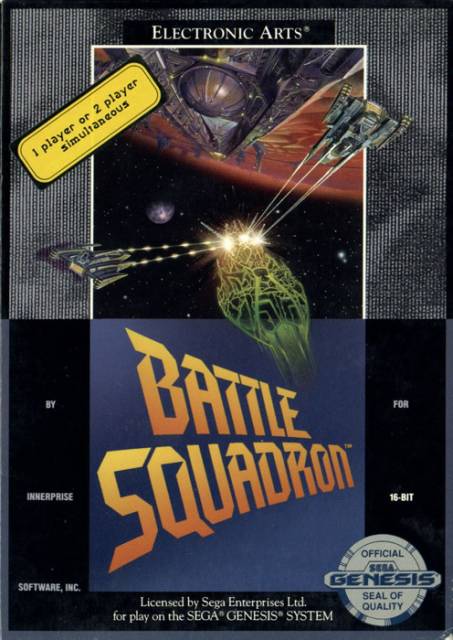
- Developer: Cope-Com / Innerprise Software
- Publisher: Electronic Arts
- JP Release: N/A
- NA Release: December 1990
- EU Release: December 1990
- Franchise: N/A
- Genre: Shoot 'em Up (Vertical)
- Theme: Sci-fi
- Premise: The hostile alien Barrax Empire has captured two human military agents with the secret info mankind needs to repel the alien threat, and it's up to the player to rescue them and defeat the Barrax once and for all.
- Availability: The Amiga version ended up on Steam recently, but now it appears to have vanished due to some licensing issues? There's also iOS and Android ports made by the original developer.
- Preservation: Hmm. Well, it's another generic sci-fi vertical shoot 'em up on a system not exactly lacking for them, but it is notable for being one of those European games that was enough of a huge hit on the Amiga to convince a US publisher - EA, in this case - to direct that momentum towards a Mega Drive port. This practice is what endeared the system to Europeans, after all, though that isn't to say that the SNES completely ignored UK developers either (in fact, I'd argue that Rare and Argonaut were very important to that console's history). I only tried it for a while, but Battle Squadron's ridiculous difficulty is partly due to some unfortunate decisions made while porting, one of which was to increase the players ship's hitbox. That's the kiss of death for a shoot 'em up.
077: Lakers vs. Celtics and the NBA Playoffs
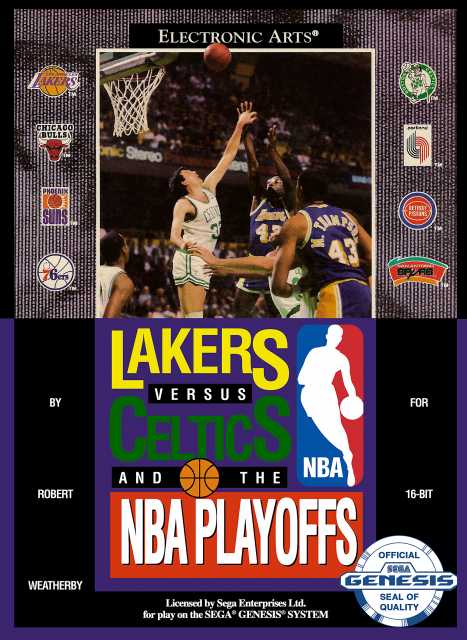
- Developer: Electronic Arts
- Publisher: Electronic Arts
- JP Release: N/A
- NA Release: December 1990
- EU Release: N/A
- Franchise: NBA Playoffs
- Genre: Basketball
- Theme: Pro Sports
- Premise: Take on bitter rivals Lakers or Celtics, or eight other teams including two groups of All-Stars, in the inaugural game in EA's NBA Playoffs franchise.
- Availability: NBA Live 19 is out in like a month. No real reason to go back in time with these EA Sports franchises, unless you miss the 2D nature of the older games (in which case, go for the newest of those, which I think was NBA Live 98).
- Preservation: We've seen the origin (sorta) of Madden NFL on this episode of Mega Archive, and here's the first of EA's NBA Playoffs series, which would eventually become NBA Showdown and finally NBA Live. The most fascinating fact surrounding this game, because I'm not going to have much to say about the 27-year-old basketball game itself, is that the EU version was available in extremely small quantities, thought to be due to a product recall concerning the game's licensing. EA vacillated for so long about getting the rights for the game in Europe that a year had already passed, and they decided to just license the 1991 follow-up Bulls vs. Lakers and the NBA Playoffs instead. A M.I.B. PAL copy of Lakers vs. Celtics sold on eBay for almost five figures recently. The cash people will drop down for a complete Mega Drive collection, my goodness.
078: Populous
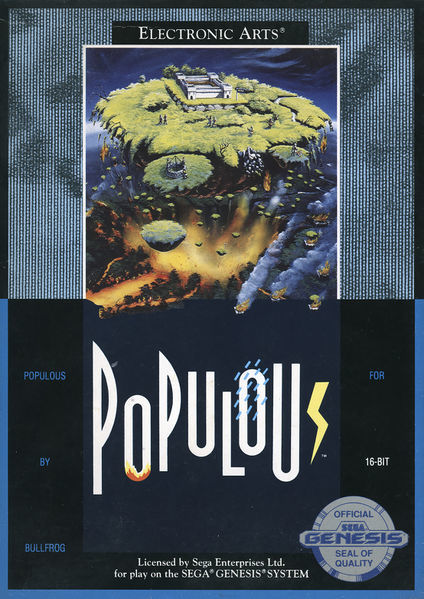
- Developer: Bullfrog
- Publisher: Electronic Arts / Sega
- JP Release: 08/09/1991
- NA Release: 1990
- EU Release: December 1990
- Franchise: Populous
- Genre: Strategy-Sim
- Theme: Fantasy
- Premise: Use your divine powers to build settlements for your followers and annihilate your enemies with unnatural disasters in Bullfrog's original god-sim.
- Availability: The PC version of Populous is on GOG. Can't get more available than that.
- Preservation: As with Battle Squadron, Populous was such a big hit on the home computers that a console port was more or less inevitable. It suffers a little without the mouse and keyboard controls, especially when time is of the essence in the harder levels, but part of Populous's appeal is that its mechanics and rules aren't actually all that complicated and thus well-suited for breezy console gaming. Build lots of flat plains for your guys, then use your god juice to hit the bad guys with volcanoes and swamps until it's time for Armageddon. (Whole lot of conflicting reports about the date out there: some sources put it in June 1990, others in 1991. It has a 1990 trademark on its title screen, so I split the difference and went with a December release for the sake of this list, which was the European release date for sure as well as the Super Famicom release date.)
079: Zany Golf
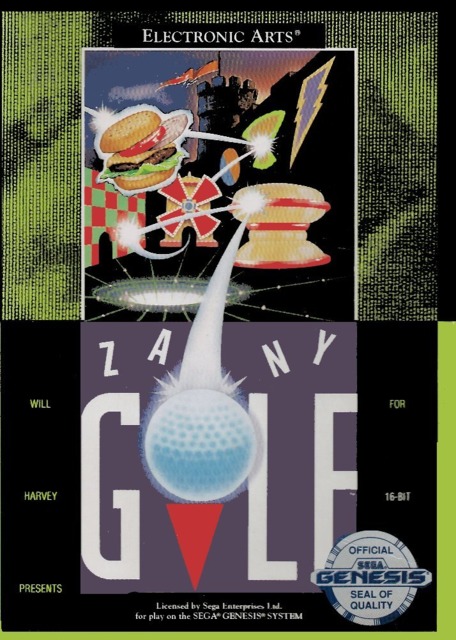
- Developer: Sandcastle
- Publisher: Electronic Arts
- JP Release: N/A
- NA Release: December 1990
- EU Release: December 1990
- Franchise: N/A
- Genre: Golf
- Theme: Abstract
- Premise: Mini-golf's been crazy before, but never Zany. That is, until this absurd putting game from developer Will Harvey, which was first seen on the Apple-IIGS.
- Availability: There's a few home computer versions also, but no recent rereleases. Seems like it'd be well-suited for an iOS port or something.
- Preservation: As with Putter Golf, the game simplifies golf controls to the extent that it's highly playable, though you do need some practice with its "pull away from the ball to shoot" system and the unusual rules governing some of the holes. Like learning to bounce the giant hamburger that's sitting on the hole you need to reach. I'm always a big fan of sports games (and pinball games too) that take advantage of the medium to create outlandish courses that wouldn't work in the real world. Something about the game's aesthetic reminded me of early LucasArts games too - the big sign on the title screen with its askew angle looked like something out of Sam & Max Hit the Road.
080: Shadow Dancer: The Secret of Shinobi
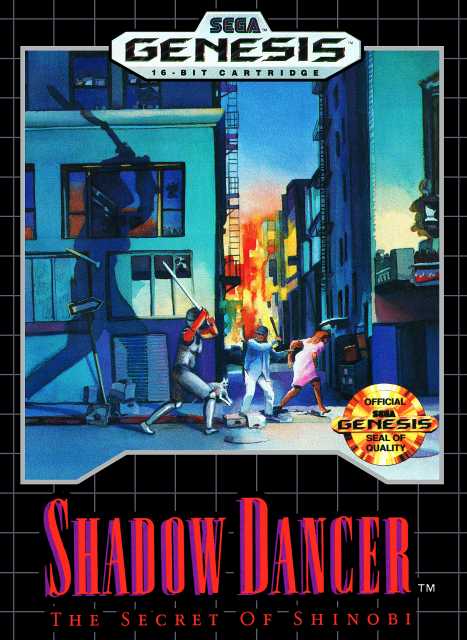
- Developer: Sega
- Publisher: Sega
- JP Release: 12/01/1990
- NA Release: February 1991
- EU Release: May 1991
- Franchise: Shinobi
- Genre: Brawler
- Theme: Ninjas
- Premise: In this enhanced Mega Drive port of the arcade game Shadow Dancer, the ninja Musashi and the dog Yamato team up to take down the criminal organization "Union Lizard". Wait, Union Lizard?
- Availability: It's part of the Sega Genesis Classics collection, which means it's also available as a standalone game on Steam.
- Preservation: There's really three Shinobi games of note for the Mega Drive: Shinobi III, The Revenge of Shinobi, and Shadow Dancer: The Secret of Shinobi. Revenge is considered "the good one", but Shadow Dancer isn't so bad. Having a dog murder people on command is a neat feature, and I like the look of the game's sci-fi aesthetic and white-robed hero. The game is so far removed from the original arcade game that it got a new subtitle to set it apart; the Mega Drive version was built from scratch to better suit the home console format, rather than the quarter-munching arcade original, with more complex level geometry among other changes. Sort of like the process Strider underwent from arcade to NES (though perhaps that's a confusing example, because the Mega Drive version of Strider was very faithful to the arcade).
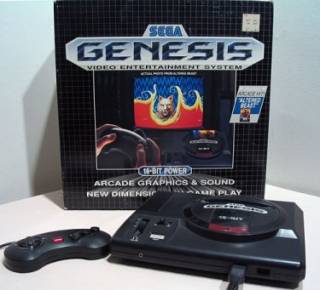
Log in to comment